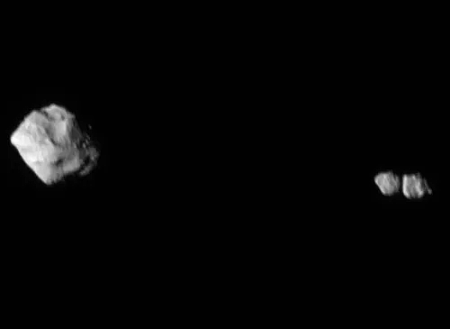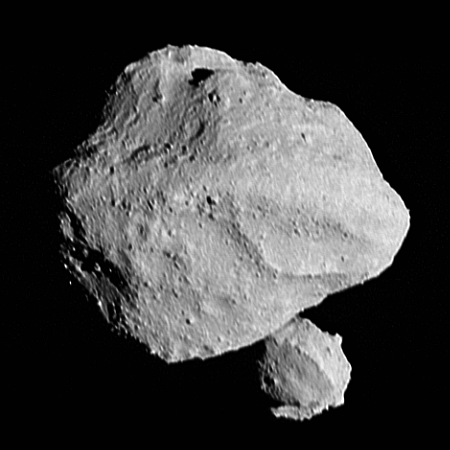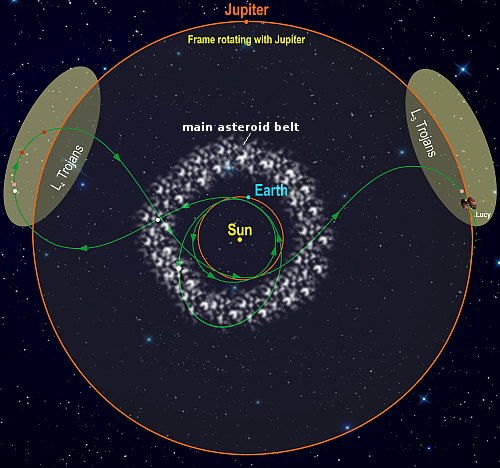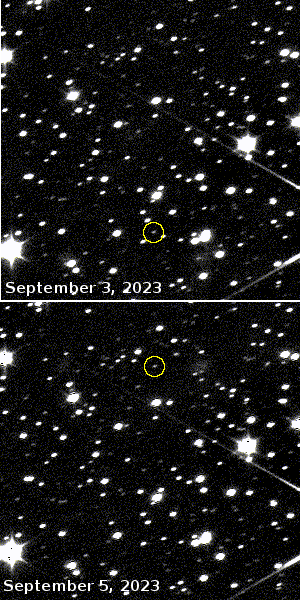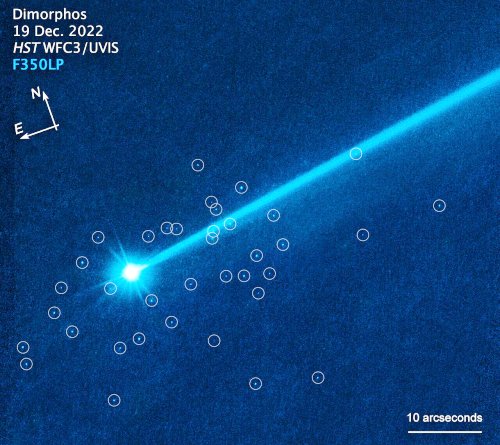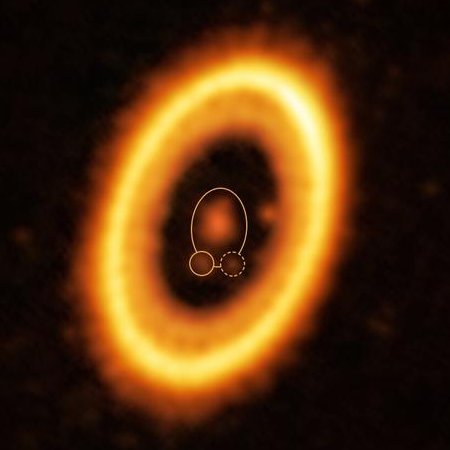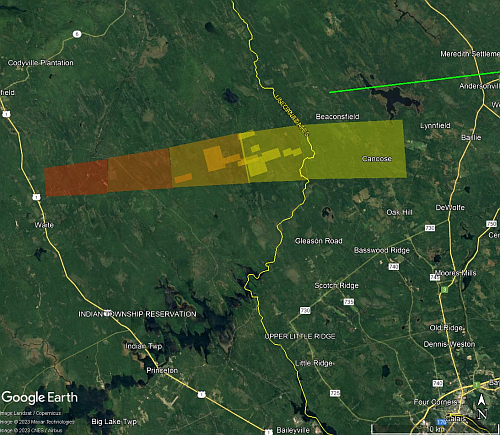Lucy: Dinkinesh’s moon is actually a contact binary
As more images have arrived from Lucy’s fly-by of Dinkinesh scientists have discovered that its moon is actually a contact binary.
The Lucy picture to the right, cropped, reduced and sharpened to post here, shows that contact binary on the right.
This image shows the asteroid Dinkinesh and its satellite as seen by the Lucy Long-Range Reconnaissance Imager (L’LORRI) as NASA’s Lucy Spacecraft departed the system. This image was taken at 1 p.m. EDT Nov. 1, 2023, about 6 minutes after closest approach, from a range of approximately 1,010 miles. From this perspective, the satellite is revealed to be a contact binary, the first time a contact binary has been seen orbiting another asteroid.
Data from the fly-by is still being downloaded.
As more images have arrived from Lucy’s fly-by of Dinkinesh scientists have discovered that its moon is actually a contact binary.
The Lucy picture to the right, cropped, reduced and sharpened to post here, shows that contact binary on the right.
This image shows the asteroid Dinkinesh and its satellite as seen by the Lucy Long-Range Reconnaissance Imager (L’LORRI) as NASA’s Lucy Spacecraft departed the system. This image was taken at 1 p.m. EDT Nov. 1, 2023, about 6 minutes after closest approach, from a range of approximately 1,010 miles. From this perspective, the satellite is revealed to be a contact binary, the first time a contact binary has been seen orbiting another asteroid.
Data from the fly-by is still being downloaded.

